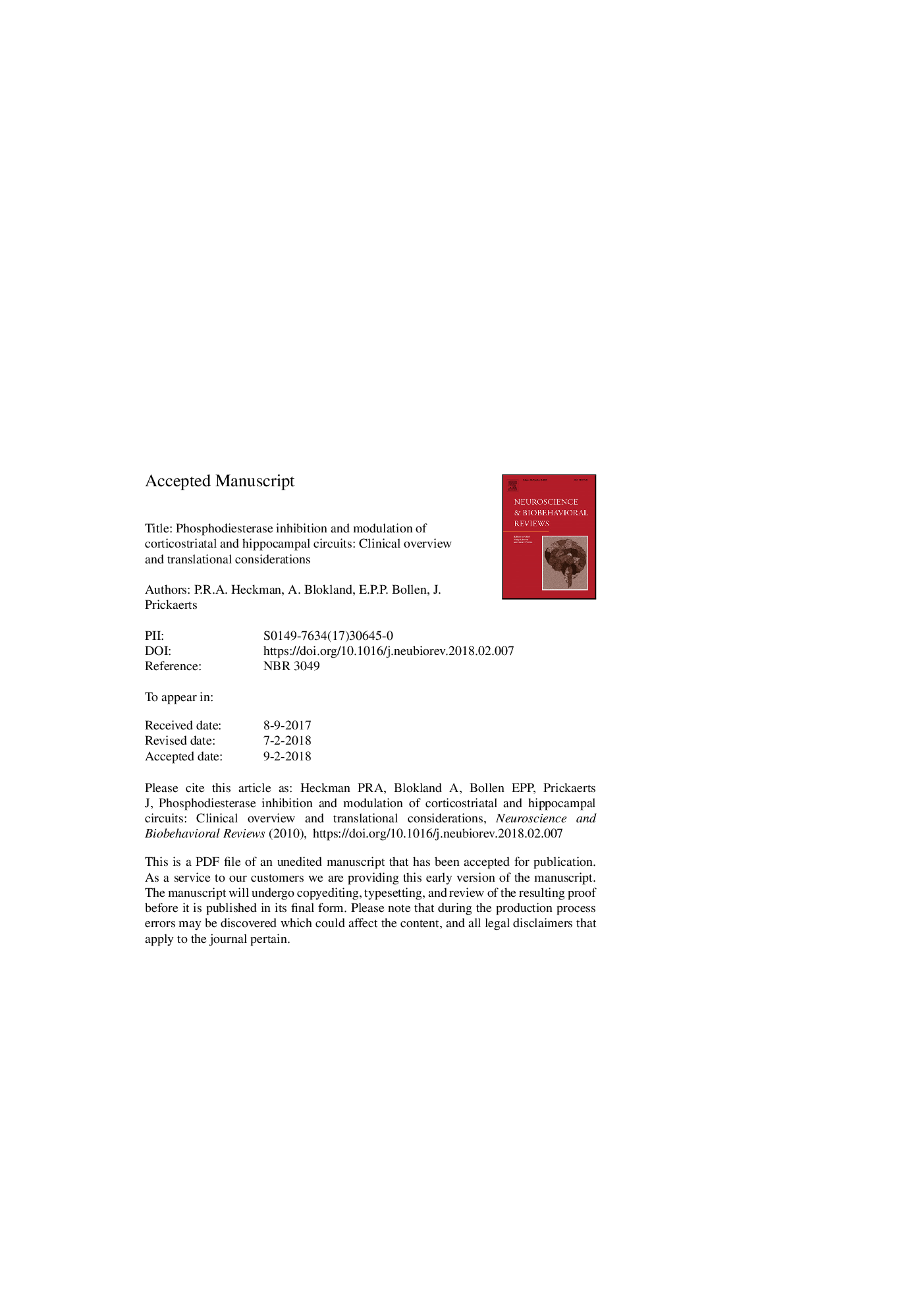| Article ID | Journal | Published Year | Pages | File Type |
|---|---|---|---|---|
| 7301982 | Neuroscience & Biobehavioral Reviews | 2018 | 68 Pages |
Abstract
The corticostriatal and hippocampal circuits contribute to the neurobiological underpinnings of several neuropsychiatric disorders, including Alzheimer's disease, Parkinson's disease and schizophrenia. Based on biological function, these circuits can be clustered into motor circuits, associative/cognitive circuits and limbic circuits. Together, dysfunctions in these circuits produce the wide range of symptoms observed in related neuropsychiatric disorders. Intracellular signaling in these circuits is largely mediated through the cyclic adenosine monophosphate (cAMP)/protein kinase A (PKA) pathway with an additional role for the cyclic guanosine monophosphate (cGMP)/ protein kinase G (PKG) pathway, both of which can be regulated by phosphodiesterase inhibitors (PDE inhibitors). Through their effects on cAMP response element-binding protein (CREB) and Dopamine- and cAMP-Regulated PhosphoProtein MR 32â¯kDa (DARPP-32), cyclic nucleotide pathways are involved in synaptic transmission, neuron excitability, neuroplasticity and neuroprotection. In this clinical review, we provide an overview of the current clinical status, discuss the general mechanism of action of PDE inhibitors in relation to the corticostriatal and hippocampal circuits and consider several translational challenges.
Keywords
MSNGPEPDENOSDISC-1globus pallidus pars externaSNRAMPAguanylate cyclaseGPiPP-1pKaACCTrkBDARPP-32CaMKMMSECREBSubstantia nigra pars reticulataNMDAN-methyl-d-aspartateSTNVTACNGCLIDCorticostriatal circuitsmRNANACFDAglobus pallidus pars internarCBFEpacPKGcGMPdopamine type 1 receptorpCREBSNCBDNFCa2+cAMPAdenosine TriphosphateATPadenylate cyclaseDisrupted in Schizophrenia 1mild cognitive impairmentErectile dysfunctionattention deficit hyperactivity disorderUS Food and Drug Administrationamyotrophic lateral sclerosisα-amino-3-hydroxy-5-methyl-4-isoxazolepropionic acidγ-aminobutyric acidlong-term depressionElectroencephalographyUnited StatesClinical reviewERPADHDALSChronic obstructive pulmonary diseaseCOPDlong-term potentiationLTPsubstantia nigra pars compactaPositron emission tomographyCNSdopamine type 2 receptorLevodopa-induced dyskinesiaBBBcentral nervous systemBrain-derived neurotrophic factorPhosphodiesteraseanterior cingulate cortexBlood-brain barrierLTDMini-Mental State Examinationpositive and negative syndrome scaleWechsler Adult Intelligence ScalePhosphodiesterase inhibitorsventral tegmental areaEEGmedium spiny neuronCyclic nucleotidesNitric oxidenitric oxide synthaseNucleus accumbensSubthalamic nucleusMCIHippocampusWAISPETEvent-related potentialcAMP response element binding proteinCa2+/calmodulin-dependent protein kinaseBIDcyclic nucleotide-gated channelsCalciumGABA
Related Topics
Life Sciences
Neuroscience
Behavioral Neuroscience
Authors
P.R.A. Heckman, A. Blokland, E.P.P. Bollen, J. Prickaerts,
